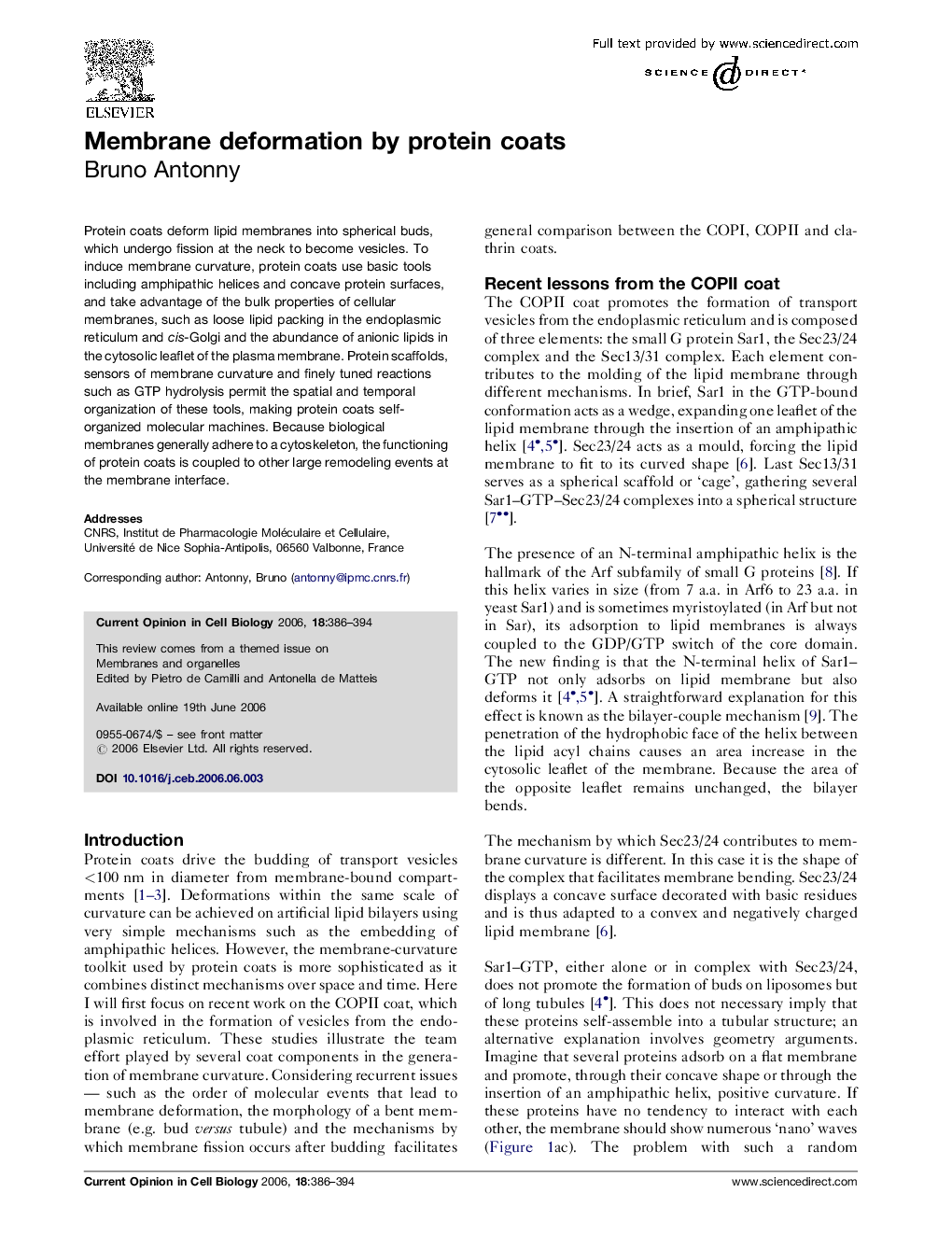| کد مقاله | کد نشریه | سال انتشار | مقاله انگلیسی | نسخه تمام متن |
|---|---|---|---|---|
| 2170312 | 1093263 | 2006 | 9 صفحه PDF | دانلود رایگان |

Protein coats deform lipid membranes into spherical buds, which undergo fission at the neck to become vesicles. To induce membrane curvature, protein coats use basic tools including amphipathic helices and concave protein surfaces, and take advantage of the bulk properties of cellular membranes, such as loose lipid packing in the endoplasmic reticulum and cis-Golgi and the abundance of anionic lipids in the cytosolic leaflet of the plasma membrane. Protein scaffolds, sensors of membrane curvature and finely tuned reactions such as GTP hydrolysis permit the spatial and temporal organization of these tools, making protein coats self-organized molecular machines. Because biological membranes generally adhere to a cytoskeleton, the functioning of protein coats is coupled to other large remodeling events at the membrane interface.
Journal: Current Opinion in Cell Biology - Volume 18, Issue 4, August 2006, Pages 386–394